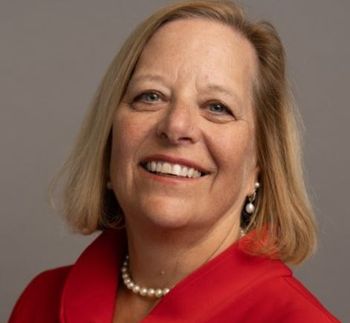
Prevalence and Clinical Gaps of RSV
Flor M. Munoz, MD, MSc, and Tina Tan, MD, FAAP, FIDSA, FPIDS, discuss the prevalence of Respiratory Syncytial Virus (RSV) and prior preventative gaps. They also discuss the recent FDA-approval of nirsevimab for late-preterm and term infants.
Episodes in this series

Transcript
Tina Tan, MD, FAAP, FIDSA, FPIDS: When we think about RSV, we know that it is a leading cause of morbidity and mortality and can lead to high hospital admission rates in affected populations. So, Flora, can you comment on the prevalence of RSV and the populations that are most at risk and what causes them to be at risk for severe RSV disease?
Flor M. Munoz, MD, MSc: Absolutely, yes. As a pediatric infectious disease physician, but also as pediatricians, we know that RSV is actually the most common cause of lower respiratory tract disease in infants. We’re talking about babies in the first year of life, but particularly, you see the majority of the cases of RSV happening in the first 3 to 6 months of life. And part of this is due to the fact that these babies are born sometimes with little to no immunity, but also they’re small. They have small airways, small lungs, and these viruses, respiratory and social viruses, are very much able to cause a lot of inflammation to the airway, a lot of mucus production, a lot of swelling that results in narrowing of those airways. And then babies have a very, very hard time breathing. So we do see every year during the winter season, which is the same time that we see influenza, we see RSV; RSV really predominant for the babies, for the younger ones.
Tina Tan, MD, FAAP, FIDSA, FPIDS: Yeah, I think what many people fail to recognize a lot of times is that the vast majority of RSV cases are occurring in normal healthy term infants. When we think about the potential consequences of RSV, [we should consider] what lasting impacts might occur in a baby who gets RSV and what is the importance of proactive preventative measures to combat the RSV epidemics that we tend to see every year.
Flor M. Munoz, MD, MSc: You make a very good point here because I think data have shown for many epidemiologic studies, most recently from the CDC through the new vaccine surveillance network, but also other independent studies, that indeed the highest burden of the disease actually occurs in full-term babies. The classic is a baby who is 4 to 6 weeks old who comes in during the RSV season, with initially something that looks like a cold that rapidly then progresses into difficulty breathing and babies really not even being able to feed properly, needing oxygen and being hospitalized for supportive care, but they can have complications as well from this. When we talk about [preventive] measures, right, you mentioned prevention, so we do have the ability to have prevention for the very young. This is for very preterm babies in whom we have a monoclonal antibody, as you mentioned, that could be given at the beginning of the RSV season, and that is only for, at this time, those who are born [after] less than 29 weeks of gestation. But we have not had the opportunity to prevent RSV through similar methods in the older children, which, again, are the ones who represent the majority of the cases that we see.... Other than the usual measures of avoiding contact with individuals who might be sick or avoiding crowds and doing good handwashing, really, there hasn’t been much of an opportunity until now to be able to prevent RSV. Certainly, a prevention strategy could have a very significant impact on this disease.
Tina Tan, MD, FAAP, FIDSA, FPIDS: I think that’s why it’s great that nirsevimab has been approved by the FDA and there have been guidelines that have been put out by the [Advisory Committee on Immunization Practices] of the CDC in terms of its administration. So I think we have a great tool in our toolbox to help protect the older term infants, where the majority of the cases tend to occur.
Transcript is AI-generated and edited for clarity.
Newsletter
Enhance your clinical practice with the Patient Care newsletter, offering the latest evidence-based guidelines, diagnostic insights, and treatment strategies for primary care physicians.



























































































































































































































































































